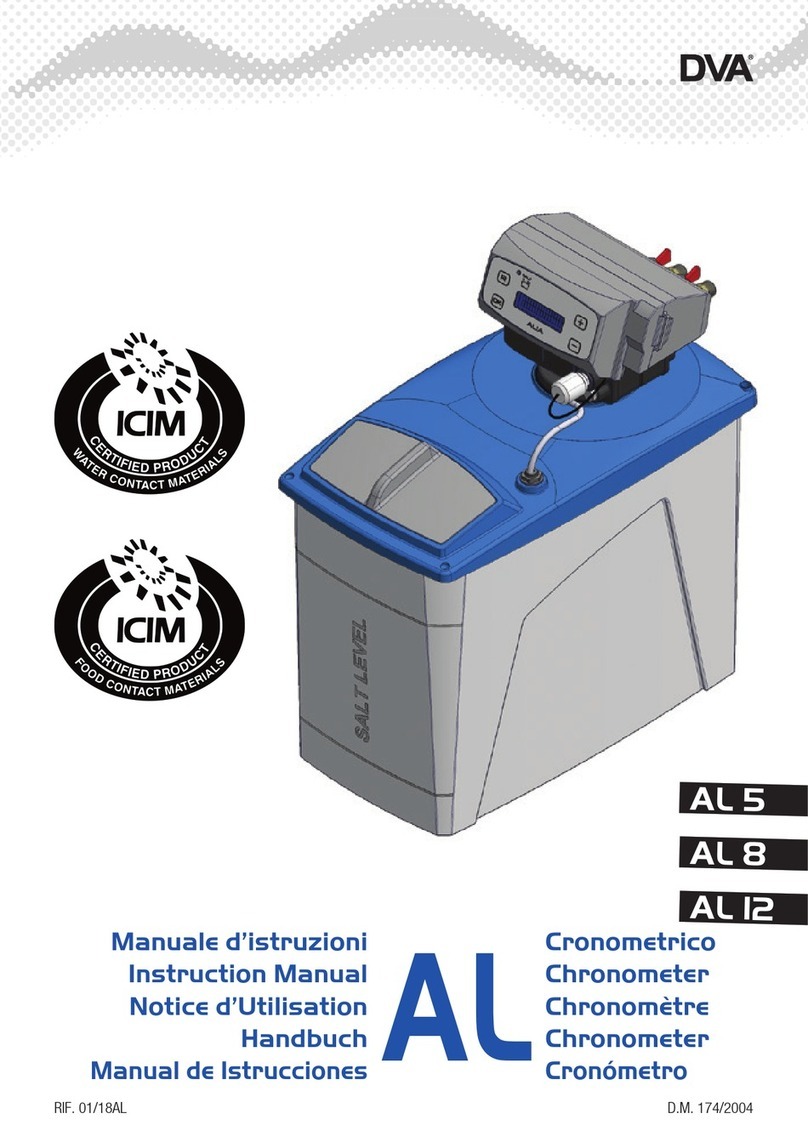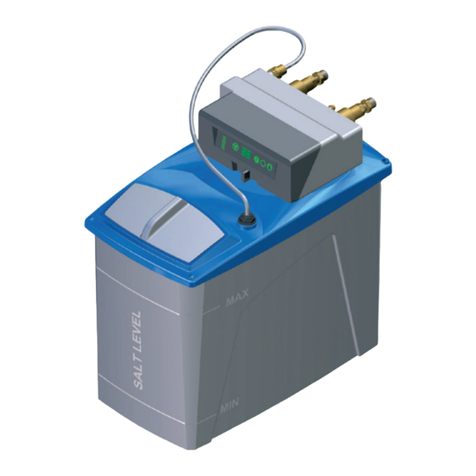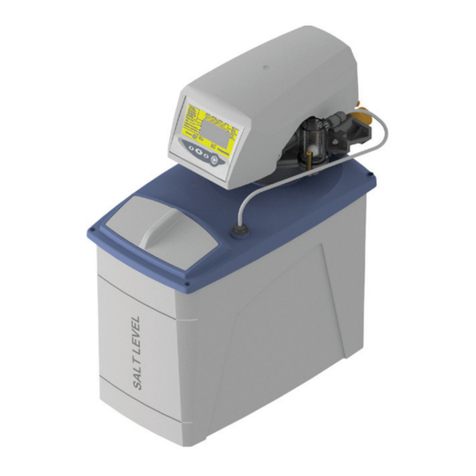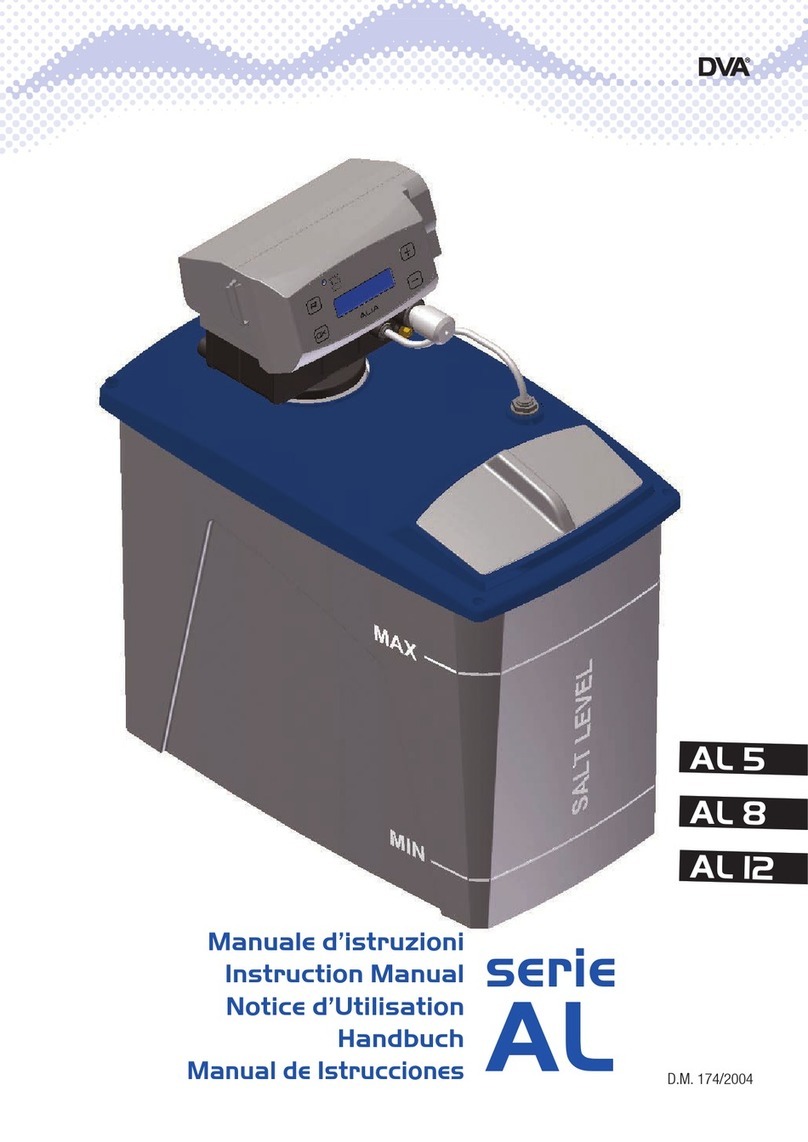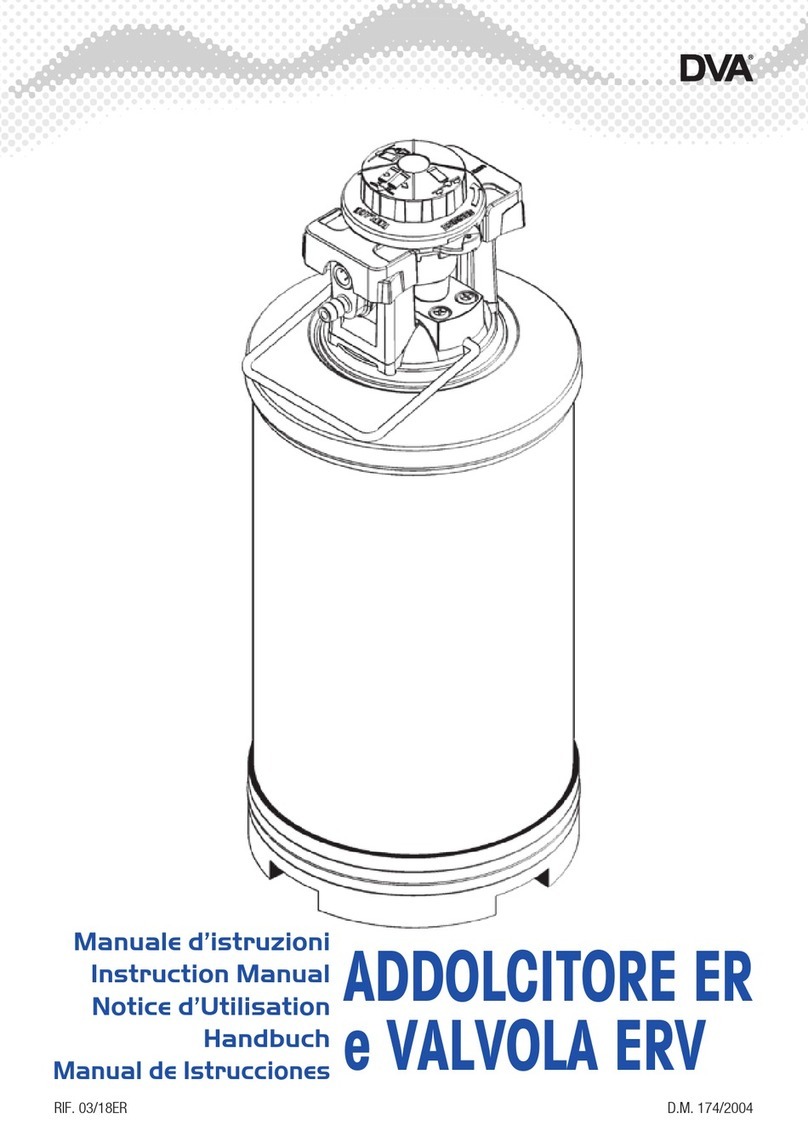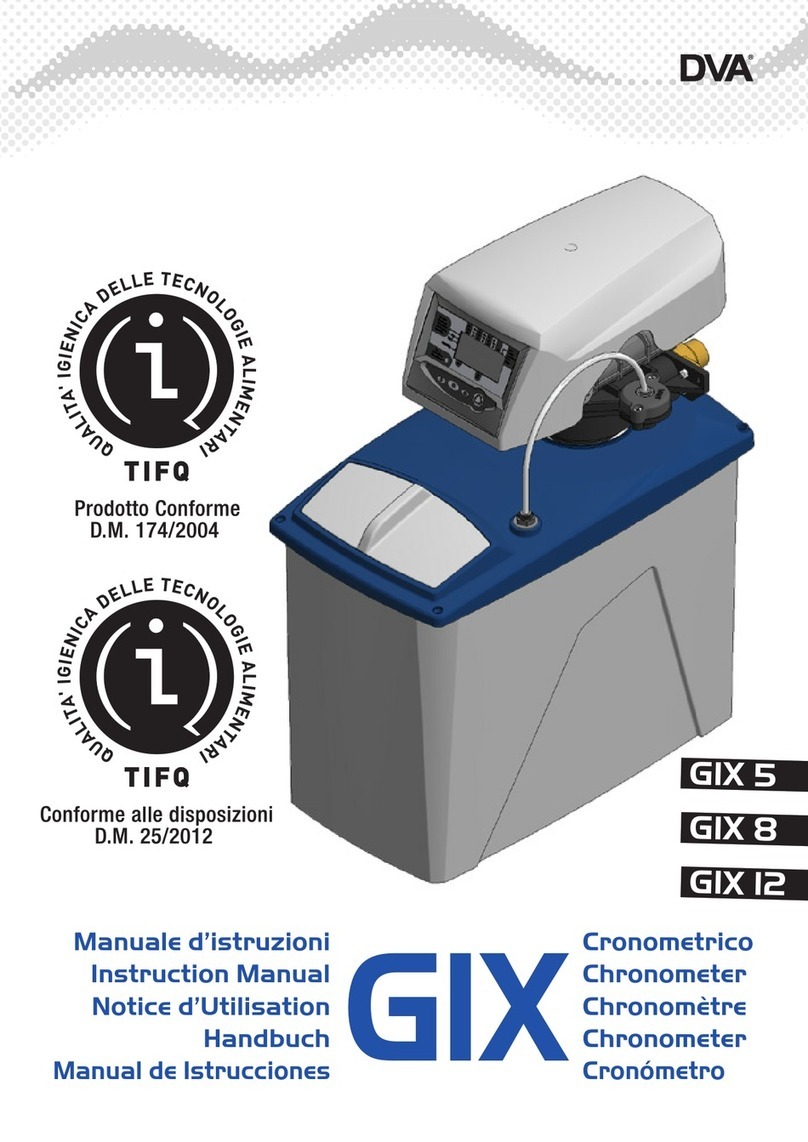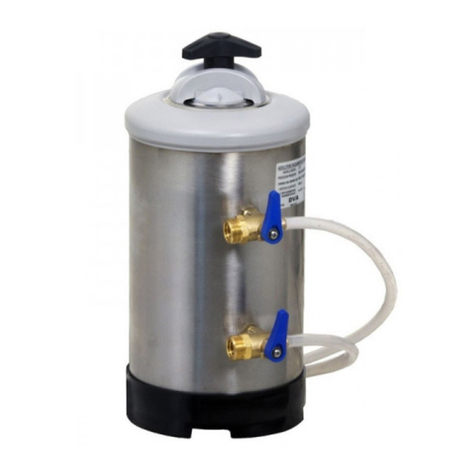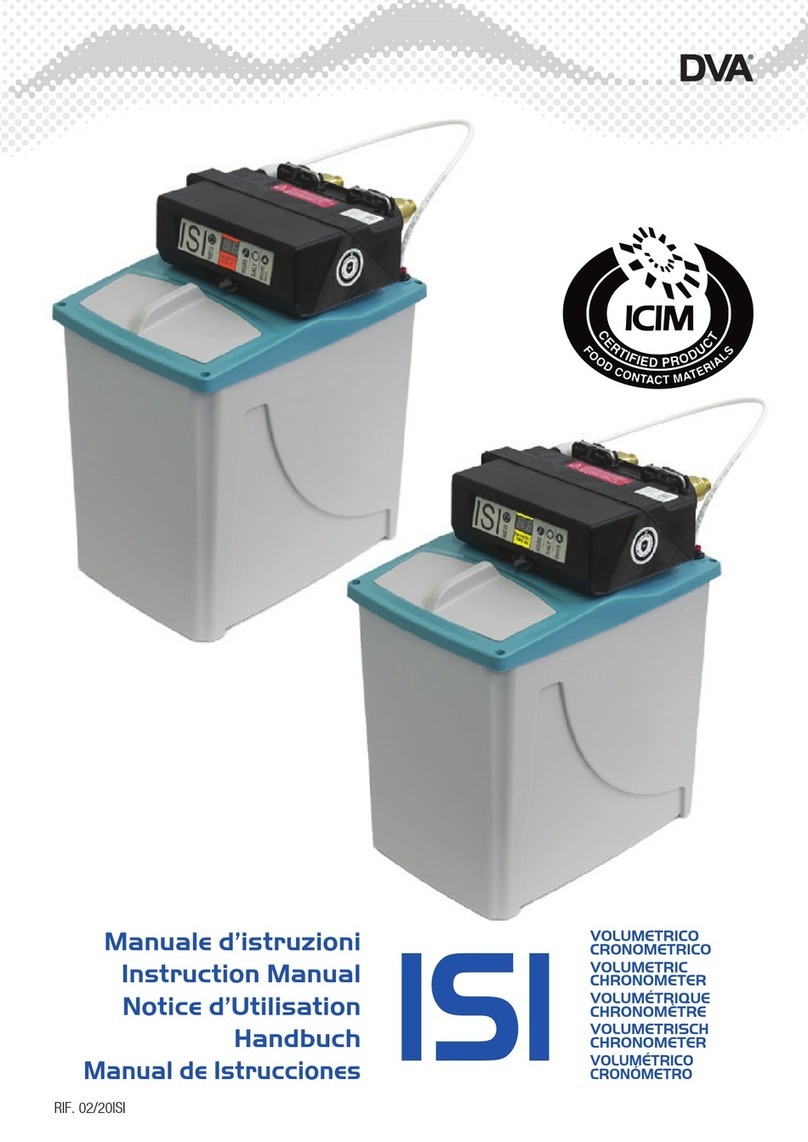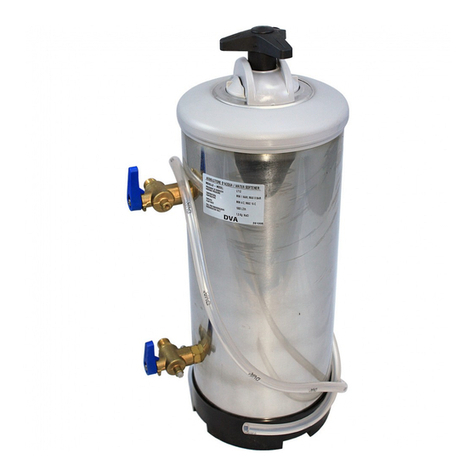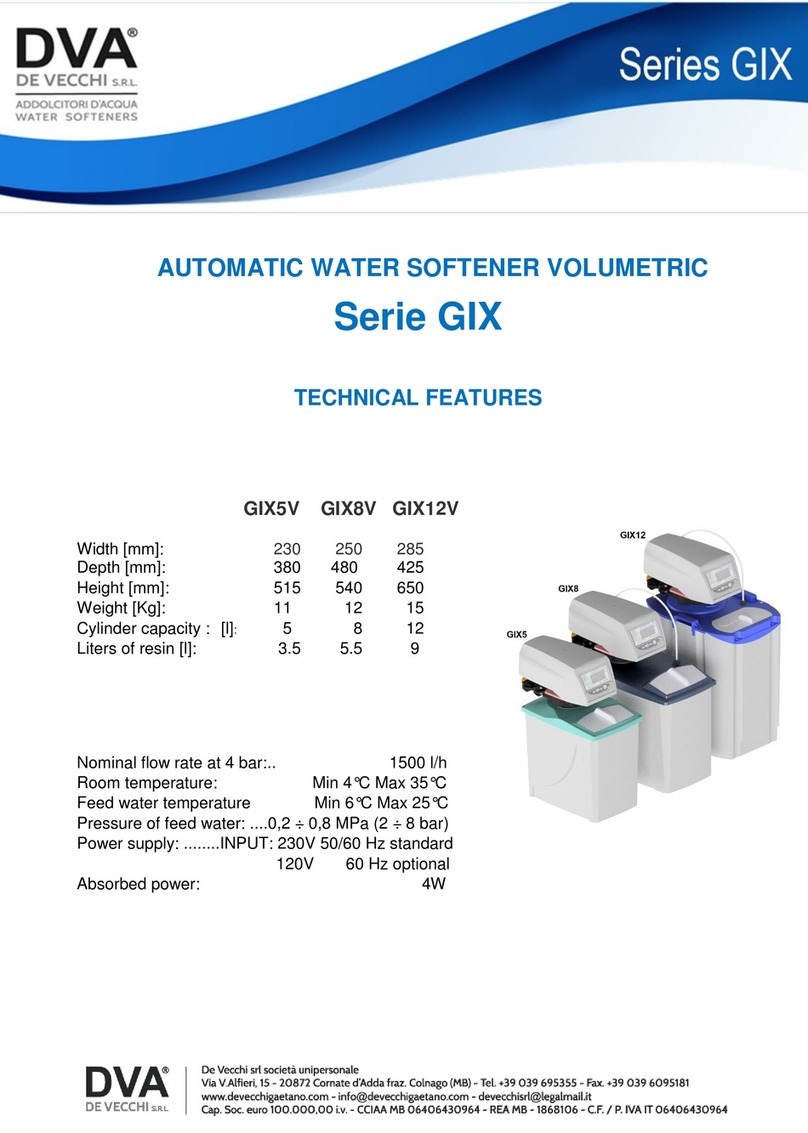
6Manuale d’istruzioni Addolcitore d’Acqua IV
AVVERTENZE PER L’UTENTE
- Questa macchina non deve essere utilizzata da bambini o da
persone con ridotte capacità fisiche, mentali o sensoriali, o
prive di esperienza, almeno che esse non siano supervisionate
da persone responsabili della loro sicurezza, o abbiano ricevuto
istruzioni riguardo il corretto e sicuro utilizzo della macchina e i
pericoli che corrono.
- Non cercare di fare riparazioni da soli, si potrebbero causare
danni, rivolgersi al vostro installatore.
- Non toccare o utilizzare l’addolcitore con mani o piedi bagnati,
umidi o scalzi.
1. PREMESSE E INFORMAZIONI GENERALI
1.1 SCOPO DEL MANUALE
Questo libretto d’istruzioni è destinato a personale qualificato,
che sia a conoscenza delle normative di sicurezza igienica del
luogo di installazione.
Lo scopo del manuale è di fornire, sia all’installatore che all’uten-
te, tutte le informazioni utili e le avvertenze riguardanti:
LO STOCCAGGIO E LA CORRETTA CONSERVAZIONE DEL PRO-
DOTTO PRIMA DELL’UTILIZZO:
• il luogo e le condizioni ambientali
• la data di scadenza
PER L’INSTALLATORE
• le precauzioni per la sicurezza igienica
• la descrizione e le caratteristiche dell’apparecchio
• il luogo e la modalità di installazione
• la messa in funzione
• le procedure da adottare dopo periodi di inattività dell’apparec-
chio
• lo smaltimento
• la risoluzione di eventuali problemi
PER L’UTENTE
• le istruzioni per la rigenerazione periodica delle resine
• le avvertenze per la cura e la pulizia dell’apparecchio
• le avvertenze igieniche e sanitarie relative all’acqua prodotta
dall’apparecchio
Il libretto ha anche lo scopo di indicare le responsabilità dell’in-
stallatore e dell’utente ed evitare che venga fatto un uso impro-
prio dell’apparecchio, quindi vi consigliamo di leggere que-
sto manuale prima di installare o utilizzare l’addolcitore.
L’inosservanza delle seguenti disposizioni comporta la decadenza
di responsabilità del produttore, da eventuali danni cagionati a
persone, cose o animali e la decadenza di qualsiasi garanzia
sull’apparecchio.
1.2 CONSERVAZIONE DEL MANUALE
Il presente libretto costituisce parte integrante ed essenziale del
prodotto. Esso va conservato con cura dall’utente e dovrà
sempre accompagnare l’apparecchio, anche in caso di sua
cessione ad altro proprietario o utente.
1.3 IDENTIFICAZIONE DELL’APPARECCHIO
L’addolcitore è identificato dalle cifre in grassetto scritte in basso
a sinistra sull’etichetta (fig. 2, I) dell’addolcitore attaccata sulla
bombola, sull’imballo e nell’ultima pagina, sul retro di questo
libretto.
1.4 DICHIARAZIONE DI CONFORMITÀ
L’apparecchio è realizzato in conformità delle Regolamentazioni
Comunitarie e leggi nazionali applicabili nel momento della sua
immissione sul mercato.
La dichiarazione di conformità sottoscritta dal costruttore è sem-
pre a disposizione su richiesta e sul sito.
1.5
NORME DI SICUREZZA IGIENICA E SPERIMENTAZIONE ICIM
Questa apparecchiatura è stata sottoposta a sperimentazione
da parte di ICIM s.p.a. Istituto di Certificazione Italiano per la
Meccanica presso il proprio laboratorio accreditato, al fine di
certificare la conformità alle seguenti normative:
• Reg. n.1935/2004/CE prodotti e componenti a contatto
con alimenti secondo disposizioni MOCA.
• D.M. n.174/2004 prodotti e componenti utilizzati a contat-
to con acqua potabile.
Si rende NECESSARIO per le riparazioni e la manutenzione
ordinaria e straordinaria l’utilizzo di ricambi originali per ga-
rantire la sicurezza igienica e prestazionale.
1.6 CONSIGLI UTILI E AVVERTENZE
PER LO STOCCAGGIO:
• Immagazzinare l’addolcitore in un luogo asciutto
• la temperatura di stoccaggio deve essere compresa
tra 0 - 35 °C
• la durata di conservazione deve prevedere il suo utilizzo entro
24 Mesi
PER L’INSTALLATORE
Vi consigliamo di installare l’apparecchio dopo aver letto attenta-
mente le istruzioni del presente manuale e vi suggeriamo in caso
di difficoltà, di chiedere l’assistenza del vostro rivenditore i cui
dati sono riportati nell’ultima pagina, sul retro del libretto.
PER L’UTENTE
• Non cercare di fare riparazioni da soli, si potrebbero causare
danni, rivolgersi al vostro installatore.
• Per la rigenerazione manuale e il rabbocco periodico del sa-
le leggere attentamente il capitolo “MESSA IN FUNZIONE E
ISTRUZIONI PER LA RIGENERAZIONE”.
• La pulizia dell’addolcitore è a cura dell’utente.
La ditta produttrice non è responsabile di eventuali danni
e/o infortuni che possano derivare dalla mancata osservan-
za di queste precauzioni.
2. CONOSCERE L’APPARECCHIO
2.1 PRINCIPIO DI FUNZIONAMENTO
Le resine cationiche inserite nella bombola dell’addolcitore, han-
no la proprietà di trasformare il carbonato di calcio (calcare), in
carbonato di sodio il quale è solubile in acqua alle temperature
normalmente presenti sia per le macchine da caffè che nei pro-
duttori di ghiaccio.
La cessione continua di ioni sodio da parte delle resine, indispen-
sabili per l’addolcimento dell’acqua potabile, tende ad esaurirsi
in proporzione alla portata e al consumo dell’acqua sino al loro
esaurimento e quindi è necessaria la loro rigenerazione che viene
effettuata per mezzo del passaggio di acqua e sale da cucina
attraverso le resine esaurite riportando le stesse allo stato attivo
d’origine.
Le resine riducono gradualmente, in funzione del numero di ri-
attivazioni, la loro funzione cationica e conseguentemente l’effi-
cienza, si consiglia la loro sostituzione dopo i sette anni di utilizzo.
2.2 DESCRIZIONE DELL’APPARECCHIO
I principali componenti dell’addolcitore sono:
• 1 valvola IV che garantisce all’utenza l’utilizzo dell’acqua anche
durante la rigenerazione delle resine
• 1 bombola contenente la resina adatta all’addolcimento
dell’acqua
• 1 tappo bombola (fig. 2, G)
ITALIANO
manuale d’istruzioni
Addolcitore d’Acqua IV






